Adress
Pátzcuaro, Michoacán, México.
GPS
19.513269362004, -101.60898685455
KNOW MORE PLACES
VISITA OTRAS LOCALIDADES
Origins and Evolution of Carnival
Carnival is a festival with very ancient roots that dates back to pagan rituals in civilizations such as Egypt and Sumeria, which celebrated the renewal of life at the end of winter. Over time, these celebrations were transformed and, during Antiquity, merged with Roman festivals (such as Saturnalia and Lupercalia) and Greek festivals, which allowed the reversal of social roles and celebrated abundance and the rebirth of nature.
With the arrival of Christianity, the idea of “giving up meat” in preparation for Lent was incorporated, which gave rise to the term “carnival” (from the Latin carnelevare, “taking away the flesh”) and transformed it into a stage of debauchery and permissiveness that precedes the period of fasting and penance.
From the Ancient World to New Spain
During the colonial era, the carnival was introduced to America by the Spanish. In the context of New Spain, carnival festivities were adapted and mixed with indigenous traditions. The arrival of the Franciscan friars and figures such as Don Vasco de Quiroga was decisive in establishing these celebrations in the Lake Pátzcuaro region, where playful and symbolic elements—such as the “torito de petate”—were used to evangelize and connect with indigenous traditions.
Carnival in Pátzcuaro and its Region
In Pátzcuaro, the carnival has established itself as a popular tradition with its own characteristics and deep cultural roots. Some key points are:
Introduction in the 16th Century:
During the Conquest, the carnival was introduced to New Spain by Franciscan friars, during the time of Don Vasco de Quiroga. This process facilitated the syncretization of European elements and indigenous traditions, allowing the festivities adapted to the new context to remain alive in the lake region of Michoacán.Typical Manifestations:
For three days (usually Sunday, Monday and Tuesday before Ash Wednesday), the streets of Pátzcuaro are filled with “toritos de petate” (little bulls made of reeds). These little bulls – made in a rustic way from reeds and decorated with tissue paper, a legacy from the time of the Nao de China – are paraded accompanied by music played with traditional instruments such as the chirimía and strings. In addition, along the route you can see typical characters of the festivity, such as “el apache”, “el caballito”, “el caporal” and “las maringuías”, which contribute to the festive atmosphere and to the preservation of local customs.Cultural Significance:
According to experts and local studies, the carnival in Pátzcuaro not only represents a period of fun and debauchery, but also a process of “purification” and social and spiritual renewal, in which participants get rid of the tensions of the year to make way for a new cycle. This celebration has been passed down from generation to generation and is an integral part of the cultural heritage of the region, coexisting with other traditional festivities such as the Night of the Dead.


